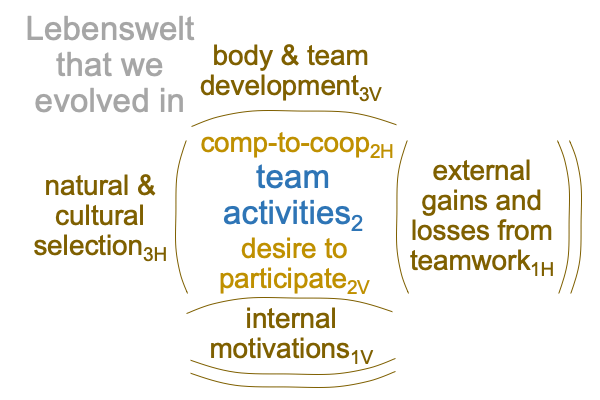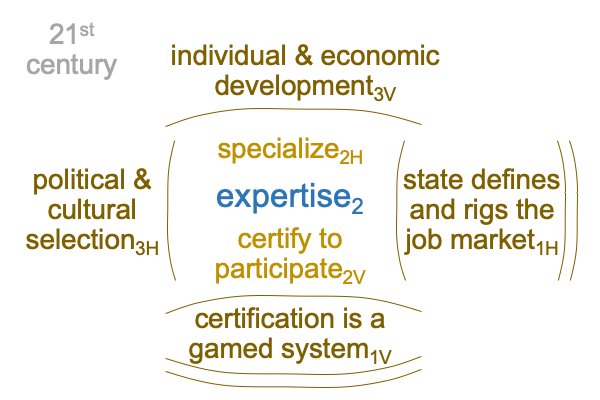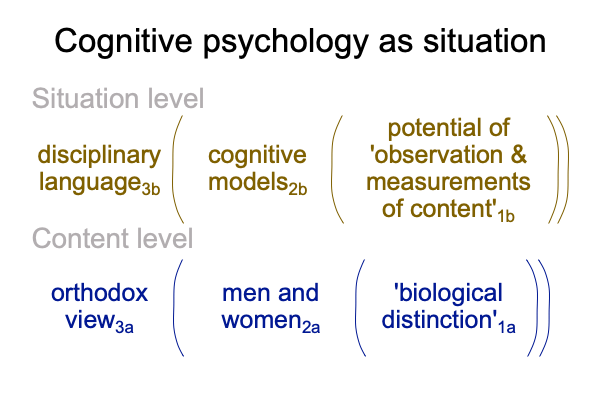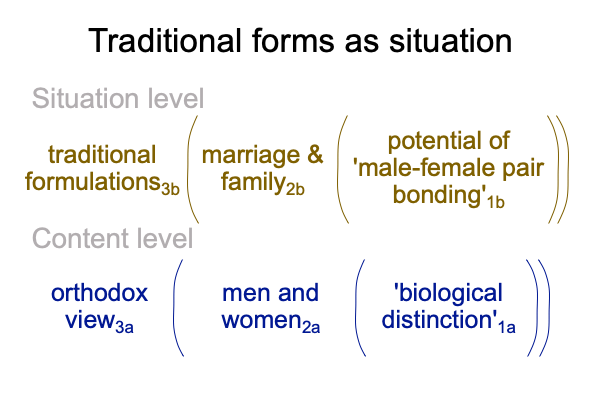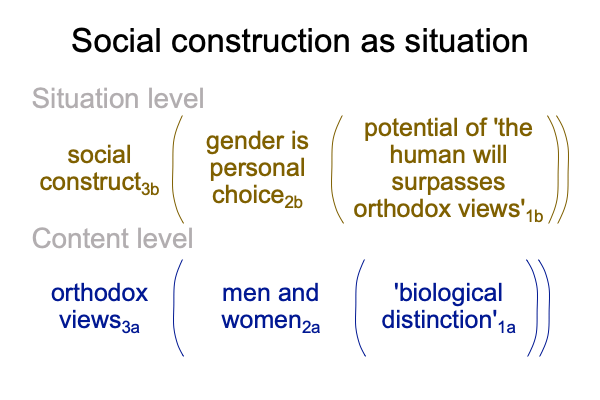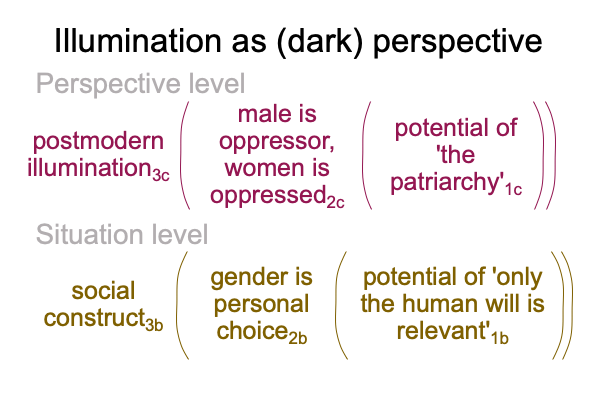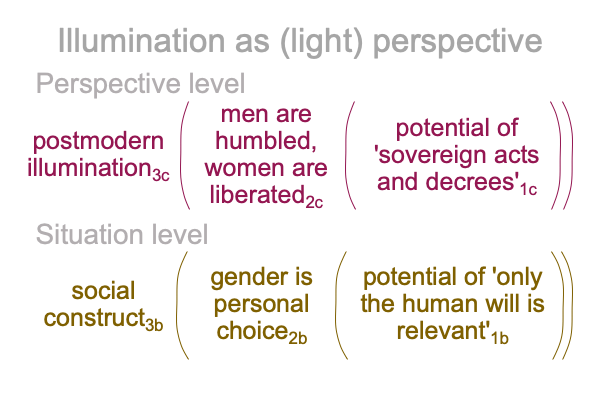Looking at Heather Heying and Bret Weinstein’s Book (2020) “A Hunter Gatherer’s Guide to the 21st Century” (Part 10 of 16)
0057 What is the concept of punctuated equilibrium?
Steven J. Gould came up with the idea that natural history contains long periods of stasis followed by sudden unravelings of the stasis… or should I say?… changes. So, the pattern is long period of one configuration, change, then long period with a different configuration. Punctuated equilibrium is not a theory. It is an observation that makes sense of the fossil record.
0058 Now, I would like to consider the author’s creation of the omega principle, as a principle where apparently distinct concepts get muddled.
0059 For example, consider this claim. A cultural adaptation may be in the service of the genes of a particular human lineage. In other words, there is a crossover from adaptation2H to phenotype2V, even though their nested forms are distinct.
How could this happen?
They belong to a single actuality!
0060 Another example is the way that the intersection for biological evolution (unexpectedly) applies to cultural evolution. The cultural trauma endured by the authors fits a cultural evolution version of punctuated equilibrium. Higher ed2, as a cultural species, foundationally changes between the pre-2017 and post-2017 intersections. The unraveling of the pre-2017 stasis presumably will end in a post-2017 stasis. At least, administrators2H hope so. But, the instructors1H are restless. State funding is increasingly limited. Plus, there is an entirely new species evolving, called “guidance2“.
0061 Now, I ask, “How can I appreciate cultural punctuated equilibrium using the intersection? Is there more to the picture than snapshots labeled ‘before’ and ‘after’?“
Perhaps.
The intersection is a single actuality2 composed of the contradiction-filled union of two actualities, each with its own nested form.
Here is a picture for biological evolution.

0061 Long periods of stasis (the “equilibrium” aspect of punctuated equilibrium) may be depicted as the single actuality2of the intersection entering into a category-based nested form.

0062 As long as the normal context3 and the potential1 remain stable, then the single actuality2 holds together, despite the contradictions between the two wedded actualities, adaptation2H and phenotype2V.
Take a look at the phylogenetic trees in chapter two (A Brief History of the Human Lineage). Each branch point may be viewed as an episode where one nested form “branches” into two. Because normal contexts3 tend to exclude one another, each lineage goes its own way.
0063 The beauty of this depiction of the equilibrium aspect of punctuated equilibrium may be found in the divergence of the chimpanzees and humans (on page 31). One lineage stays in tropical wet regions. The other moves further into mixed forest and savannah. The phenotype for the former remains knuckle-walking. The phenotype for the other shifts to bipedalism.
Once the second lineage is fully bipedal, the human niche (of the potential of triadic relations) opens up and the genome (the potential of australopithecine DNA) begins to produce phenotypes that are more attentive to signs, mediations and other triadic relations. The second lineage changes through descent with modification.
0064 So, I can label the normal context3 for the human genus2 as “the Lebenswelt that we evolved in” and I can imagine that the potential corresponds to actualities2a on the content level below the situation-level actualities of adaptation2b(2H)and phenotype2b(2H).

0063 As long as the normal context3 and the potential1 remain stable, then hominins become more and more adapted to triadic relations2, such as signs, mediations, judgments, category-based nested forms and so on. Plus, they become more phenotypically capable in cognitively processing triadic relations. This is discussed in Razie Mah’s masterwork, The Human Niche.
0064 Now, I shift to the cultural, using the example of higher ed (before 2017). Recall, higher ed2 is the intersection of professors2H and colleges2V.
Here is a picture of cultural equilibrium before 2017.

Here is a picture of the category-based nested form that allows us to understand the single actuality.

Here is a picture of how I configure the normal context3 and potential1 for the single actuality of higher education (before 2017)2.

Once again, the potential1 consists in the content-level actualities that underlie the situation-level nested forms that comprise the intersection.














